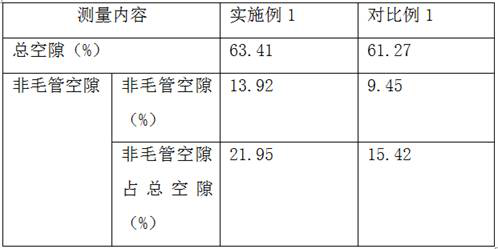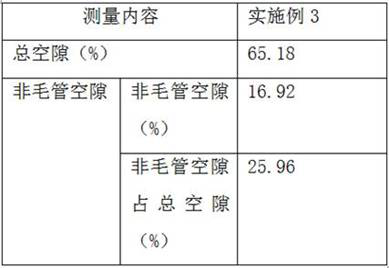Cultivation method for improving disease resistance of syringa vulgaris
A cultivation method and disease resistance technology are applied in the cultivation field of improving the disease resistance of lilac, can solve the problems of large economic loss and unsatisfactory prevention effect, achieve vigorous plant growth, improve soil structure and rhizosphere environment, promote The effect of developed roots
- Summary
- Abstract
- Description
- Claims
- Application Information
AI Technical Summary
Problems solved by technology
Method used
Image
Examples
Embodiment 1
[0027] Embodiment 1 and Comparative Example 1 were carried out in the Changyi Shibu Test Site affiliated to Weifang Academy of Agricultural Sciences, Shandong Province; the planting number of Example 1 was 300 plants, and the planting number of Comparative Example 1 was 100 plants.
[0028] Example 1
[0029] 1. Ridge planting: In March 2018, the 2-year-old seedlings of Lilac 'Qiuli' were planted in March 2018. The distance between plants and rows was 2m. The distance between center lines is 2m.
[0030] 2. Replacing the planting hole matrix: In April of that year, a maintenance hole was excavated centered on the planted seedlings. The length and width of the hole were both 50cm. The hole was surrounded by bamboo slices. The surface soil in the hole was taken out to a depth of 10cm. After taking the soil, evenly apply the lime sulfur mixture stock solution to the part below 20cm from the base of the plant, and then fill in the special cultivation medium for disease preventio...
Embodiment 2
[0041] Embodiment 2 and comparative example 2 are carried out at the nursery stock base of Qingzhou Deli Agriculture and Forestry Technology Co., Ltd. in Shandong Province. The planting quantity of embodiment 2 is 200 plants, and the planting quantity of comparative example 2 is 100 plants.
[0042] Example 2
[0043] 1. Ridge planting: In March 2019, the 2-year-old seedlings of Lilac 'Porcelain Blue' were planted in March 2019. The distance between plants and rows is 2.5m. The distance between the centerlines of the ridges is 2.5m.
[0044] 2. Replacing the planting hole matrix: In April of that year, a maintenance hole was excavated centered on the planted seedlings. The length and width of the hole were both 55cm. The hole was surrounded by bamboo slices. Take out the surface soil in the hole, and the soil depth is 15cm. After taking the soil, evenly apply the lime sulfur mixture stock solution to the part below 25cm from the base of the plant, and then fill it with a spe...
Embodiment 3
[0055] Embodiment 3 is carried out at the nursery stock base of Deli Agriculture and Forestry Science and Technology Effective Company in Qingzhou, Shandong Province, and the planting quantity of embodiment 3 is 200 strains.
[0056] Example 3
[0057] 1. Ridging planting: In March 2019, the 2-year-old seedlings of Lilac 'Porcelain Blue' were planted in March 2019. The distance between plants and rows is 2m. The height of the cultivation ridge is 20cm. The distance between center lines is 2m.
[0058] 2. Replacement of the planting hole matrix: In April of that year, a maintenance hole was excavated centered on the planted seedlings. The length and width of the hole were both 50 cm. The surface soil in the hole was taken out to a depth of 10cm. After taking the soil, evenly apply the lime sulfur mixture stock solution to the part below 20cm from the base of the plant, and then fill in the special cultivation medium for disease prevention with a thickness of 10cm.
[0059] T...
PUM
 Login to View More
Login to View More Abstract
Description
Claims
Application Information
 Login to View More
Login to View More - R&D
- Intellectual Property
- Life Sciences
- Materials
- Tech Scout
- Unparalleled Data Quality
- Higher Quality Content
- 60% Fewer Hallucinations
Browse by: Latest US Patents, China's latest patents, Technical Efficacy Thesaurus, Application Domain, Technology Topic, Popular Technical Reports.
© 2025 PatSnap. All rights reserved.Legal|Privacy policy|Modern Slavery Act Transparency Statement|Sitemap|About US| Contact US: help@patsnap.com



